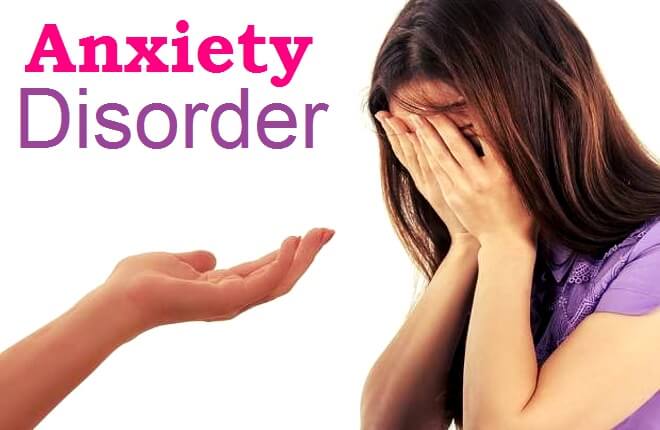Interested in finding out ”what are the 5 types of anxiety disorders?” Then the following article is for you. Read on to learn more.
KAMPALA | NOW THEN DIGITAL — In case you are wondering ”what are the 5 types of anxiety disorders as well as their symptoms” then this article is intended for you, so read on to find out more.
- Anxiety is a natural human emotion that occurs from time to time, but only if it causes severe suffering and prevents a person from accomplishing at least one aspect of their life, like education, employment, relationships, or fun hobbies.
- Untreated anxiety can lead to depression for many people.
- People who suffer from panic disorder have recurrent panic attacks that interfere with their daily activities in some way.
- The following article discusses the main types of anxiety disorders, which many people are unfamiliar with.
- Read also: When it comes to food allergies, tree nuts, milk, and peanuts are among the most common. Learn how you can avoid these food allergy triggers.
The feeling of anxiety is a natural human emotion that can be experienced from time to time. However, anxiety is only diagnosed as a disease when it leads to severe suffering and hinders a person from undertaking at least one aspect of their life, including education, employment, relationships, duties, and fun hobbies.
There are many people who suffer from anxiety and these problems are something which cannot easily be overcome.
Many people acquire depression due to the toll that anxiety takes on their lives when they are left untreated, If there are no additional obstacles or worries, anxiety can be treated by a mental health expert with short-term therapy.
When anxiety is not treated, it can lead to depression in some people. If there are no additional obstacles or worries, anxiety can be treated by a mental health professional with short-term therapy.
There has been an increase in these cases recently. Because of the pandemic, more people are dealing with anxiety disorders. The following article discusses the five important types of anxiety disorders, which many people do not know.
Phobias
A phobia is a fear of a specific animal, thing, or situation. The fear of dogs, spiders, heights, blood draws, the dentist, or any other situation falls into this category. Phobias of different kinds are known by different names.
A person with a phobia may either attempt to take extreme lengths to avoid the feared thing or scenario, or they will confront it, albeit with severe distress.
Before a fear is classified as a phobia, it must last at least six months.
Fears that are age-appropriate are not the same as phobias; for example, a 3-year-old who is terrified of the dark is not a phobia.
Generalised Anxiety
When someone has generalized anxiety, they are concerned about a variety of things, including school or job performance, finances, world events, natural disasters, interpersonal relationships, and more.
These fears are difficult to manage and constantly rise to the surface, making it difficult for people to concentrate on their tasks.
Worries occur frequently and severely enough to make it difficult to concentrate and produce or exacerbate headaches, stomach aches, muscle tension, and irritability.
This is one of the most common types of anxiety disorders.
Panic Disorder
If a person has panic attacks which interfere with their daily activities in some way, they are said to suffer from panic disorder.
Panic attacks can include a wide range of symptoms, such as racing heart, rapid breathing, chest pain, dizziness, nausea, or abdominal pain, blurred vision, sweating, shaking, feelings of impending doom, and feeling as if the world is not real (as if you are in a dream or a movie), or feeling as if you are outside yourself.
The individual may also be afraid of losing control, dying, or going insane. Panic attacks can be sparked by a specific event or might strike apparently out of nowhere. Within 15 minutes, they normally reach their peak intensity.
It is crucial to remember that panic attacks can occur without having a panic disorder.
When a person has panic disorder, they either avoid circumstances that they believe may trigger a panic attack (such as going to the mall, going to the movies, or driving) or worry about having another episode.
Panic attacks should not be explained by a specific phobia or social anxiety in the case of panic disorder.
Social Anxiety Disorder
In social anxiety disorder (also referred to as social phobia), there is a persistent apprehension of being evaluated by others coupled with acute discomfort in social situations.
Someone may be terrified of saying the incorrect thing, feeling dumb, or being humiliated.
This anxiety can manifest itself in a single scenario, such as giving a presentation at school, or it can manifest itself in a variety of settings in which a child is uncomfortable dealing with peers and adults.
As a result, the anxious individual may avoid engaging with others while being at ease with close friends and relatives. An anxious person may also ask others to speak for them, such as ordering meals in a restaurant.
It is vital to note that shyness and social anxiety disorder are not the same things. Shyness is mild discomfort with interacting with people in specific contexts.
In contrast, social anxiety disorder interferes with an individual’s ability to function at home, school, work, or in their social circle. Social anxiety disorder is not always indicated by sporadic, temporary discomfort in social circumstances.
Separation Anxiety Disorder (SAD)
An individual who is suffering from a separation anxiety disorder is always worried about the possibility of being separated from or losing a caregiver or an attachment figure.
Separation anxiety causes people to worry about what will happen to their caregiver if they are separated, such as if the caregiver will die or become ill.
The individual is also concerned about what will happen to them if they are removed from their caretaker, such as whether they will be hurt or harmed.
Because of their increased anxiety, the person may appear “clingy” to their caregiver and have difficulty leaving their side to go to school, remain at home alone, or sleep alone.
Separation anxiety is frequently triggered by a stressful event or a loss. For instance, a little child who has lost a pet or a young adult who is moving out of their parents’ house for the first time.
It’s crucial to remember that anxiety is both common and manageable.
If your child’s anxiety is interfering with their daily activities or duties (such as school or chores), medical care, or interpersonal interactions, talk to their primary care physician or a mental health provider about treatment options.
As already mentioned, anxiety is a mental disorder that can be treated by a mental health expert using short-term therapy programs.













